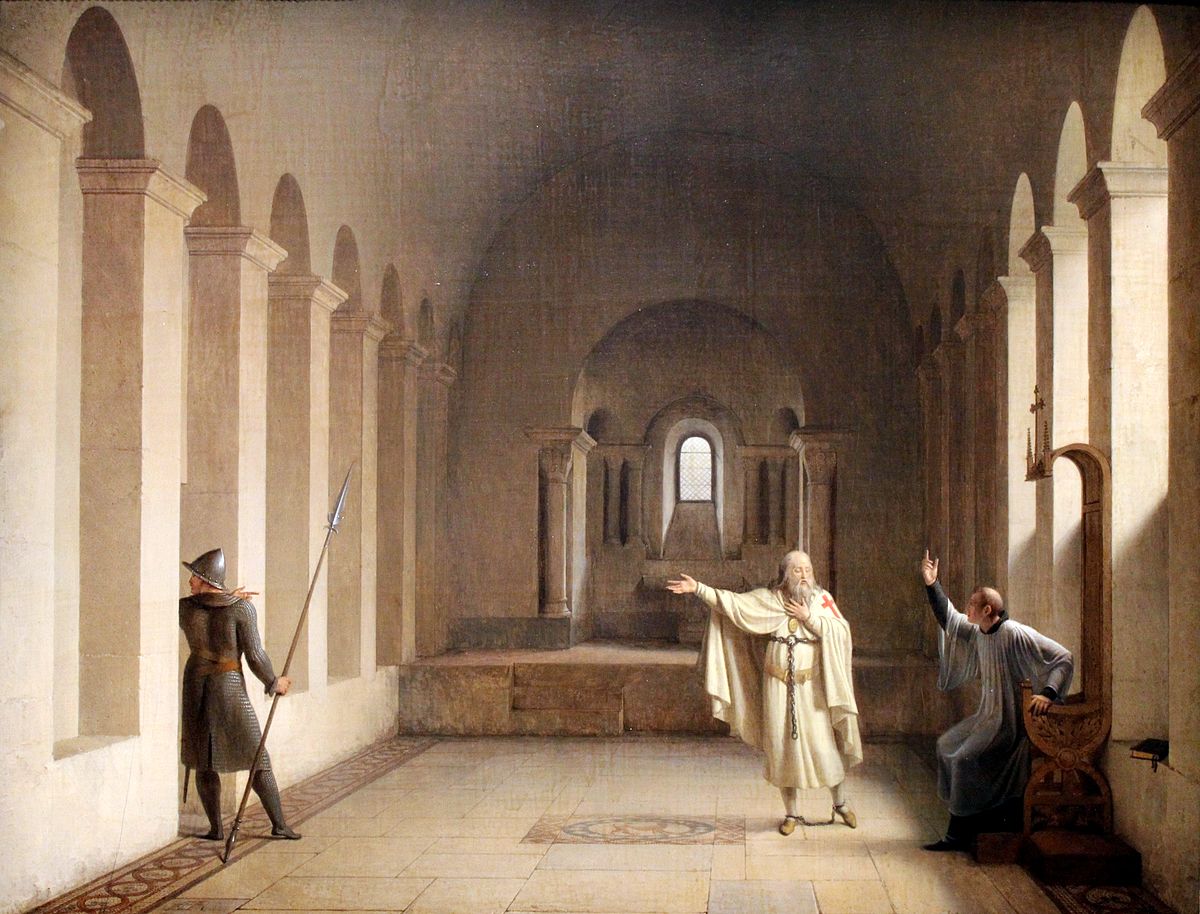
Templars Arrested
Avignon, FranceIn 1305, the new Pope Clement V, based in Avignon, France, sent letters to both the Templar Grand Master Jacques de Molay and the Hospitaller Grand Master Fulk de Villaret to discuss the possibility of merging the two orders. Neither was amenable to the idea, but Pope Clement persisted, and in 1306 he invited both Grand Masters to France to discuss the matter.
De Molay arrived first in early 1307, but de Villaret was delayed for several months. While waiting, De Molay and Clement discussed criminal charges that had been made two years earlier by an ousted Templar and were being discussed by King Philip IV of France and his ministers. It was generally agreed that the charges were false, but Clement sent the king a written request for assistance in the investigation. According to some historians, King Philip, who was already deeply in debt to the Templars from his war against England, decided to seize upon the rumours for his own purposes. He began pressuring the church to take action against the order, as a way of freeing himself from his debts.
At dawn on Friday, 13 October 1307—a date sometimes incorrectly cited as the origin of the popular stories about Friday the 13th — King Philip IV ordered de Molay and scores of other French Templars to be simultaneously arrested. The arrest warrant started with the words: Dieu n'est pas content, nous avons des ennemis de la foi dans le Royaume" ("God is not pleased. We have enemies of the faith in the kingdom"). Claims were made that during Templar admissions ceremonies, recruits were forced to spit on the Cross, deny Christ, and engage in indecent kissing; brethren were also accused of worshipping idols, and the order was said to have encouraged homosexual practices. Many of these allegations contain tropes that bear similarities to accusations made against other persecuted groups such as Jews, heretics, and accused witches. These allegations, though, were highly politicised without any real evidence. Still, the Templars were charged with numerous other offences such as financial corruption, fraud, and secrecy. Many of the accused confessed to these charges under torture (even though the Templars denied being tortured in their written confessions), and their confessions, even though obtained under duress, caused a scandal in Paris. The prisoners were coerced to confess that they had spat on the Cross. One said: "Moi, Raymond de La Fère, 21 ans, reconnais que j'ai craché trois fois sur la Croix, mais de bouche et pas de cœur" ("I, Raymond de La Fère, 21 years old, admit that I have spat three times on the Cross, but only from my mouth and not from my heart"). The Templars were accused of idolatry and were suspected of worshiping either a figure known as Baphomet or a mummified severed head they recovered, amongst other artifacts, at their original headquarters on the Temple Mount that many scholars theorize might have been that of John the Baptist, among other things.
